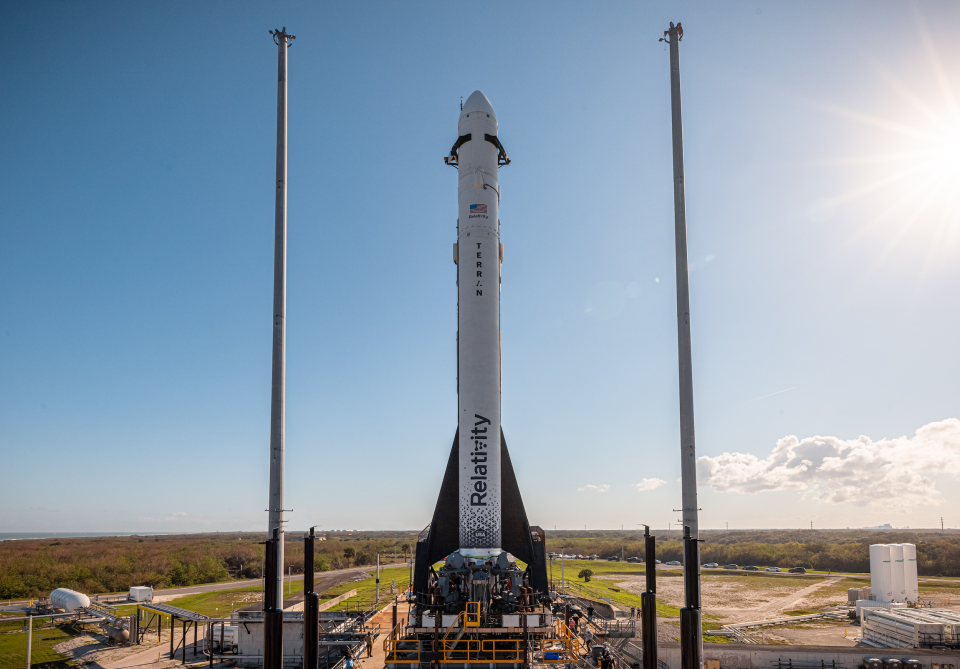Relativity Space sets March launch date for Terran 1

Relativity Space said Wednesday that it had received its launch license from U.S. regulators, clearing the way for its first-ever orbital flight attempt on March 8.
Relativity will be attempting to send its lightweight rocket Terran 1 to orbit for the first time, in a demonstration mission that will not carry any customer payloads. The company is quick to point out that, at 110-feet tall and 85% 3D-printed by mass, Terran 1 is the largest 3D-printed object to attempt orbital flight and the largest 3D-printed object to exist, period. Sending it to space will be no small feat, and indeed, this flight will see Relativity’s 3D-printed architecture and approach put to the test for the first time.
Relativity originally announced a launch date of winter 2021, which was then pushed to early 2022; the company cited engine and materials upgrades, as well as the COVID pandemic, as reasons for the delay.
The information gleaned from this first flight will also inform the ongoing development of Terran R, a much larger and more powerful rocket that will have a payload capacity slightly less than SpaceX’s Falcon 9. (Terran R is designed to be reusable; if the company decided to fly it expendable, its payload capacity would be greater than that of Falcon 9.) Relativity told TechCrunch last summer that it had already secured $1.2 billion in launch contracts for Terran R, an impressive number for a company that has not yet sent anything to orbit.
It’s a tall order, so all eyes are likely to be on the eight-year-old company. If all goes well, Relativity will use Terran 1 to deliver a small NASA satellite to orbit next, under a $3 million contract it won in 2020. A Relativity spokesperson told TechCrunch that there is not a firm date for that launch.
"Good Luck, Have Fun" will take place from the company’s pad at Cape Canaveral Space Force Station in Florida, with a launch window between 1:00-4:00 PM ET. The company is assessing backup dates with the range, the spokesperson said. You'll be able to watch the launch via Relativity's livestream below.

 Yahoo Autos
Yahoo Autos 